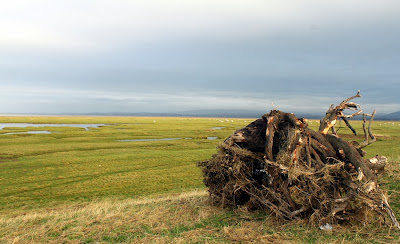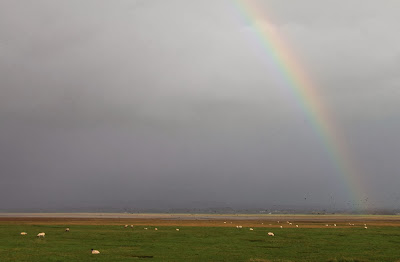My first birding of 2016 entailed a drive to Oakenclough where the feeders at the ringing site needed a clean and then a top-up. What with the Christmas holiday and the continuing inclement weather we still struggle to fit in a ringing session, but there looks to be a few small windows of opportunity by the middle of next week.
Owls have been in the news lately with both Short-eared Owls and Barn Owls being seen in good numbers locally. It’s a time of year when the owls’ favoured foods are normally in short supply, forcing the birds to feed more frequently and for longer periods.
So when I set off early in the direction of Stalmine, Pilling and Rawcliffe mosses I wasn’t surprised that almost the first bird I saw in the distance ahead was a hunting Barn Owl. The owl flew through someone’s large garden, ghosted across the road ahead, perched briefly on a farm fence and then flew off behind some large buildings and out of sight, over one hundred yards away. It was a typically brief glimpse of a Barn Owl, a shy species which doesn’t normally hang around for the camera. I left it alone, hoping it would find breakfast without my intrusion.
Barn Owl
I headed for roadside fields where last week I’d seen a huge flock of 1400 Fieldfares. Some were still feeding in just one of the same fields and now just 250 remained but a quite separate flock of 200+ could be found in flooded stubble half a mile away.
This second field proved to be full of a good mix of species but all very flighty due to the proximity of the main road which heads north to south carrying fast, noisy traffic.
Here I found the second gang of Fieldfares, this time with a single Redwing among them, together with 200+ Linnet, 40+ Chaffinch, 12 Pied Wagtail, 1 Grey Wagtail, 10 Meadow Pipit, 2 Skylark and 16 Corn Bunting.
Corn Buntings continue to be extremely scarce in these parts just as they are elsewhere in the UK. Small wintering flocks of Corn Buntings can be easily overlooked as to the untrained eye this brown farmland bird superficially resembles a Meadow Pipit or a Skylark. These few Corn Buntings were the first I had seen in six months or more.
Corn Bunting
Meadow Pipit
Skylark
Further along the road an extensive flood held 200+ Black-headed Gull, 275 Lapwing, 2 Shelduck, 1 drake Pintail and 90 Mallard. It’s unusual to see a Pintail so far inland, even Shelducks in winter. In the far distance was a single Buzzard sat along the fence-line. That's two month's worth of rain below. And now it's official - December 2015 was the wettest month ever from UK weather records kept since 2010.
Rawcliffe Moss
Pintail
Heading towards Garstang Town along Skitham Lane I came across a flock of 30+Goldfinch and 6/8 Tree Sparrows close to a farmhouse which has bird feeders in the garden. Then all was literally uphill to Oakenclough with a roadside Kestrel the single bird of note until I spotted a mixed flock of 90 Fieldfares and 70 Starlings feeding on a windswept hillock.
Starlings and Fieldfares
Around the bird feeders were Chaffinches, Coal Tits and Goldfinches, enough for a reasonable catch should Andy and I return on a suitable day. Wednesday is looking good; but this can change as we know only too well from 2015.
Close by I surveyed the water and found 120 Mallard, 1 Goldeneye, 3 Snipe, 1 Cormorant and 1 Grey Wagtail.
Happy New Year everyone. Join in soon for more birding during 2016.
Linking today to Stewart's World Bird Wednesday and Anni's Birding Blog.
Linking today to Stewart's World Bird Wednesday and Anni's Birding Blog.


























































.jpeg)












.jpg)












